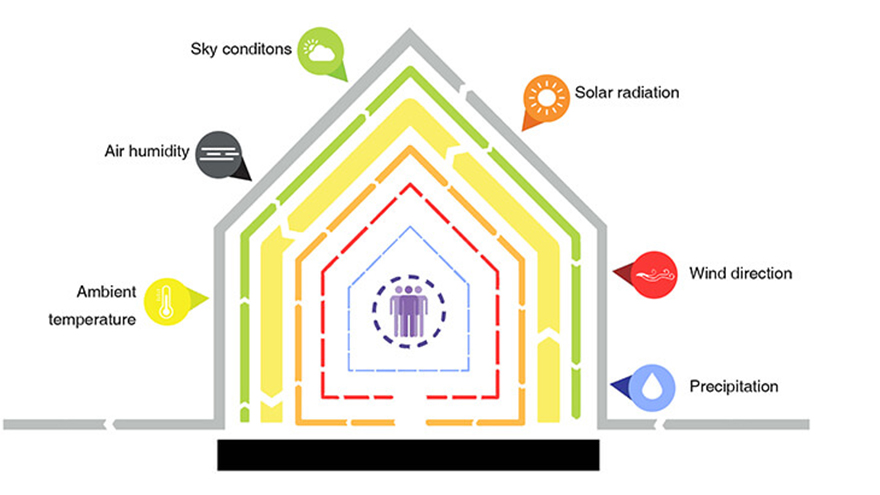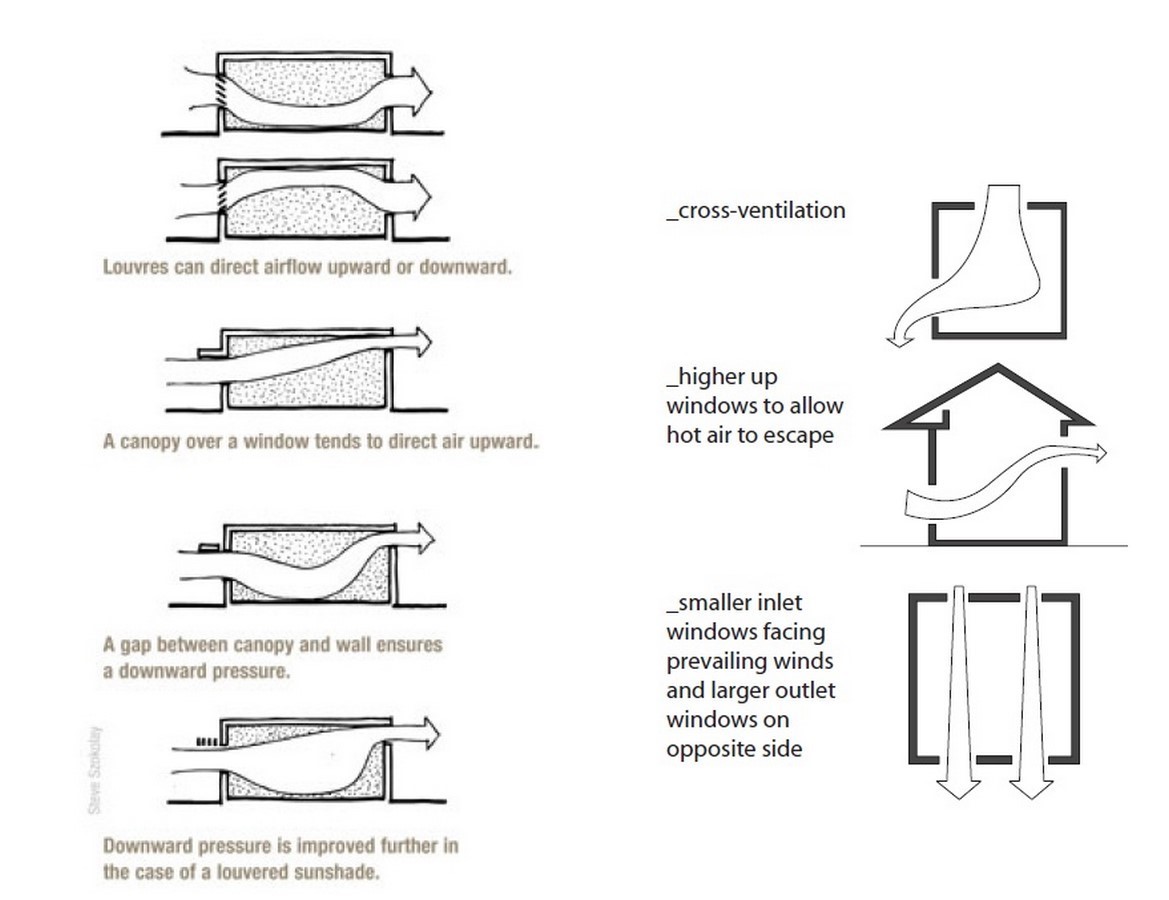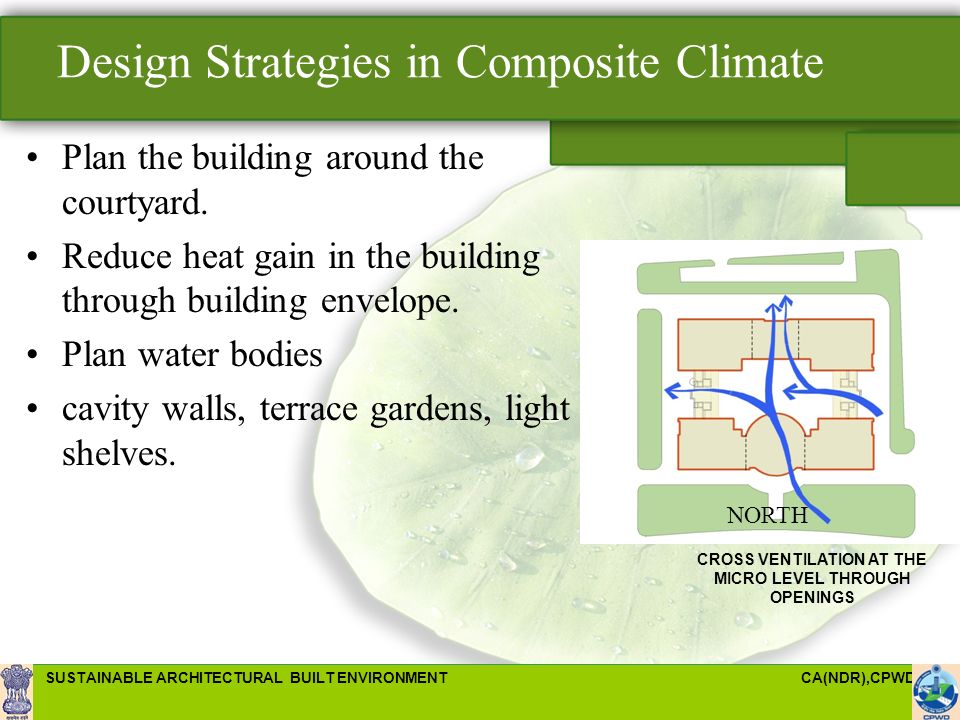Considerations for buildings to become comfortable include realisation of an open barrier between the indoor and outdoor climate make use of solar and natural ventilation strategies and allowance for human intervention in climate control to satisfy subjective needs Fountain et al 1996. RPETGI General recommendations for building design in warm humid climate.

Energy Efficiency For Composite Climate
A CASE STUDY OF HOT DRY AND WARM HUMID CLIMATES IN NIGERIA.

. Architectural considerations for composite climate introduction. Recommendation for composite climate eg. The place experiences three definite seasons.
Various design strategies adopted in this building have been analyzed which can help in developing design considerations for Net Zero Energy Building NZEB in the composite climate. It is becoming evident that strategies to reduce energy consumption in buildings have a direct impact on the performance of the exterior building skin. The passive design strategies for composite climate and also presents the various methods of passive cooling techniques.
An adaptive thermal comfort design is essential. Passive strategies provide thermal and visual comfort by using natural energy sources sinks. Design considerations Choose a site exposed to cooling breezes and design to exclude adverse winds while allowing for cross-ventilation and night purging.
Composite pavement designs Rehabilitation and overlays Evaluates effects of specification changes MEPDG. Hot-dry early summer warm-humid late summer monsoon period and cold-dry period in winter. Double walls with insulation in between are a suitable solution.
Avoidance of direct exposure of facades to solar radiations. Pavement Design Considerations. 42 M-E Pavement Design Process Climate Structure Response Materials Distress Damage Time Accumulation Traffic Iterations.
Passive design strategies in composite warm-humid climates. This climatic zone is not normal as seen in hot and dry or any other climatic zones. CLIMATIC CONSIDERATIONS JALIS.
The composite climate zone covers the central part of india. REQUIREMENTS IN A HOT AND HUMID CLIMATE Minimization of the high day temp. Use north-facing high thermal mass living areas with passive solar.
The air-conditioning and lighting consumption can be reduced by in- corporating climate-responsive features in the design. For a half year it could display the following weather conditions. Solar radiation outside air wet surfaces vegetation etc means in composite climate.
A rectangular form with a longer axis along the north-south is the preferred orientation. And 300 PM during the. Compact form with low SV ratio is recommended.
Envelope Design Considerations. This communication presents design considerations and thermal performance of a hostel building using passive techniques for a composite climatic con. An architects aim would be to.
ORIENTATION OF BUILDING In composite climate the orientation of the buildings is preferable in North-East South-West Directions. Passive solar systems basic rules-1. The buildings south face should receive sunlight between the hours of 900 AM.
Delhi and Gurgaon. CLIMATIC CONSIDERATIONS IN ARCHITECTURAL DESIGN OF BUILDINGS IN TROPICS. Warm and humid 3.
Dr manjari chakraborty 2. SITE a Landform For flat sites for design consideration for the landform is immaterial. Passive solar design for mud huts in jharkhand considering microclimatic parameters for comfort janmejoy gupta phdarch10532011 deptt.
The flat roof is a good reflector and re-radiates heat efficiently especially if it consists of a solid white painted material. Climate responsive architecture takes into consideration seasonality the direction of the sun sun path and solar position natural shade provided by the surrounding topography environmental factors such as wind rainfall humidity and climate data temperature historical weather patterns etc to design comfortable and energy-efficient. In case of slopes and depressions the building should be located on windward side or crest to take advantage of cool breeze.
Composite region Characteristics of the composite region are very hot and dry summer followed by a humid season with monsoon rains. Impact of climate on design of rural dwellings in composite climate warm humid type climate. Moreover there currently exists a lack of in-depth research on the influence of design strategies on the energy consumption of high-rise buildings in tropical climate Raji et al 2016.
The building should be elongated on an east-west axis. East and west orientation should be protected by buffer spaces shaded walls etc. Below listed are 10 design considerations an architect must make while building in tropical climates.
Mahdavi and Kumar 1996. This communication presents design considerations and thermal performance of a hostel building using passive techniques for a composite climatic condition of Delhi India. The key of design take an advantage of local climate microclimate for human comfort.
A square plan with a courtyard would be very effective. Similarly the ice and snow assessment can contribute to the decision process regarding envelope design. Jalis on the outer facade of the building helps in cooling shading and ventialtion.
There are certain design considerations for composite region buildings which should resist heat gain in summer and resist heat loss in winter. With reference to the same the prompted design considerations vary with existing structures contextual typologies and nature itself but the most prominent of all is the location of study and build. The size of the windows on the east and west sides should be minimized in order to reduce heat gain.
Incorporation of solar passive techniques in a building design helps to minimize load on conventional systems such as heating cooling ventilation light. Orient the buildings with longer axes in the east-west direction. This helps in receiving less radiations which results in lesser heat gain reduces the overall air conditioning requirement thus saves energy Proper orientation also helps in receiving natural light ventilation.
Cold Climate HVAC by A. Reduction in the humidity levels Continuous air circulation to reduce heat and relief from stickiness. CLIMATIC CONSIDERATIONS PROJECTIONS.
CLIMATE RESPONSIVE DESIGN STRATEGIES IN COMPOSITE CLIMATE In passive solar energy mechanical means are not employed to utilize solar energy. Hot and dry 2. Large projecting eaves and wide verandahs are needed in composite climate as out-door living areas to reduce sky glare keep out the rain and provide shades.
The Composite Climate was chosen to study due to its annual. The actual comfort conditions achieved will be contextual and depend on the building topology and building design specifications.

10 Things To Remember When Designing In Tropical Climate Rtf Rethinking The Future

Sustainable Architectural Built Environment Ppt Video Online Download

Design Of A Sustainable Residence In Composite Climate Of India


0 comments
Post a Comment